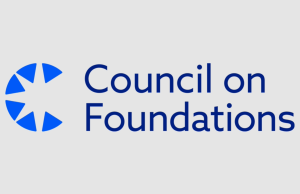A new nonprofit newsroom will be coming to the nation’s fourth-largest city by next year, with more than $20 million in seed funding from local philanthropies in Houston.
Investments for an initial period of three years will come from philanthropic sources, including:
- Houston Endowment, $7.5 million
- Kinder Foundation, $7.5 million
- Arnold Ventures, $4 million
- American Journalism Project (AJP), $1.5 million
- John S. and James L. Knight Foundation, $250,000
Leaders of the as-yet-named newsroom plan to begin operating late this year or early 2023. The endeavor follows a two-year research effort led by AJP, a venture philanthropy dedicated to local journalism. That included focus groups, community listening sessions, and surveys in four different languages, as well as content analyses of existing coverage to examine local information gaps and news needs. Houston has a population of about 2.3 million, 7.1 million in the metro area, and covers a land mass of some 640 square miles.
The news organization’s name, coverage strategies, and office location will be determined by its new leadership. A local search committee of civic, business and nonprofit leaders will conduct an open search for a founding management team, including Editor-in-Chief and a CEO for the region-wide network. Applications are being accepted on an introductory web page, www.localnewsforhouston.org
The search committee will include:
- Ann Stern, president and CEO, Houston Endowment
- Dr. Anne Chao, manager of the Houston Asian American Archive, Rice University
- Armando Perez, executive vice president, H-E-B Houston, and chairman of United Way Greater Houston
- Jeff Cohen, executive vice president, Arnold Ventures
- Reginald DesRoches, Howard R. Hughes Provost and President-Elect, Rice University
- Rich Kinder, chairman, Kinder Foundation, and executive chairman, Kinder Morgan, Inc.
Its wide-ranging coverage will be available for free to readers as well as other news organizations. AJP will serve as seed funder, along with the John S. and James L. Knight Foundation, and is “incubating and shepherding the establishment of the new organization.” The effort plans to be sustained by a combination of philanthropy, memberships, and sponsorship revenue.
“Journalism is, at its core, a public service — and Houston could use more of it,” wrote Stern, Kinder and Laura Arnold, co-founder and co-chair of Arnold Ventures, in a post titled, “Houston Deserves A News Ecosystem as Big and Bold As It Is.”
The nonprofit newsroom will work “hand-in-hand with existing outlets — print, digital, social media, radio and television — to put more reporters at work investigating local government, Houston-specific issues, and community needs,” they wrote. “The journalism will be fiercely independent and nonpartisan without editorial control or influence by its funding sources.”
Houston was likely the largest metro in the nation without a nonprofit newsroom and the philanthropic investment is significant, said Sue Cross, executive director and CEO of the Institute for Nonprofit News (INN), adding that startup nonprofit newsrooms are increasingly attracting bigger investments, noting the Baltimore Banner, which plans to launch this year. The Houston effort is likely to be comparable in size to The Salt Lake Tribune, which in 2019 shifted to nonprofit status after 150 years as a traditional metro newspaper, Cross said. This month, Chicago Public Media, the parent company of public radio station WBEZ, expects to close on its acquisition of the Chicago Sun-Times.
INN’s members typically operate on annual budgets of less than $5 million, Cross said. What’s also unique is the effort to survey the community’s news needs to guide the editorial vision and coverage, she said.
Except for a handful of the largest nonprofit news organizations, like ProPublica and Mother Jones, most nonprofit news organizations have a staff of less than 100. One-third of nonprofit news outlets publishing today did not exist five years ago, according to the INN’s 2021 Index, titled “The State of Nonprofit News: Rising to new challenges and public needs in a crisis year.” Nonprofit outlets have launched at an average pace of a dozen or more a year since 2008, with at least 20 launching every year for the past four. INN saw its membership grew 27% from 2019 to 2020.
In 2020, more than $70 million was raised for nonprofit newsrooms from more than 2,000 major donors, according to INN. The majority of contributions to nonprofit news outlets came from northern California, Chicago, Washington, D.C., and New York City. Small-dollar donors contributed some $25 million across nonprofit newsrooms.











